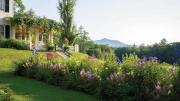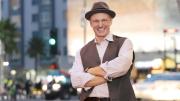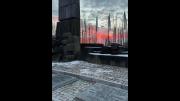Arts and Sciences dean Jeremy R. Knowles starts his annual letter to faculty colleagues, issued in January, with a literary hat trick. The first two pages quote John Adams, A.B. 1755, LL.D. 1781 (charging the Commonwealth’s legislature “to cherish the interests of literature and the sciences, and all seminaries of them: especially the university at Cambridge”); the vice-chancellor of Oxford (on “the danger of entrenched success”); and, as a counter-indicator of FAS’s present condition, Fiorello La Guardia (“There are three reasons why I can’t do this. The first is that we have no money. And the other two don’t matter.”). Literary flourishes aside, Knowles discusses many substantive matters reported on elsewhere in this section: planning for the libraries, the graduate school, a possible new natural-science and anthropology museum, and the condition of the College.
His overall theme might be deemed “focused expansiveness.” With FAS entering an era of endowment-funded prosperity (running annual surpluses in the tens of millions of dollars, and retaining resources to pay for future initiatives), its dean considers the time ripe to “transform the educational experience of our undergraduates and graduate students and to improve the scholarly lives of the faculty.” But rather than entertain innumerable proposals toward these worthy ends, his agenda emphasizes a single priority: increasing the number of professors. To do so, he directs attention to “our largest challenge…space.”
A striking chart (adapted here) demonstrates that FAS ranks expanded dramatically in the halcyon postwar 1950s and 1960s. In that era, largely during Nathan M. Pusey’s presidency, federal research dollars were at flood tide and buildings proliferated, particularly for the sciences. Since then, the number of professors has grown imperceptibly.
To accommodate his goal of adding 60 faculty positions—10 percent growth—in this decade, Knowles unveils a sweeping construction agenda for the “North Precinct.” This area, bounded by Kirkland, Oxford, and Hammond Streets and Kirkland Place, encompasses the chemistry, earth and planetary sciences, and biology and biochemistry facilities; the Museum of Comparative Zoology and the Peabody Museum; the cyclotron and parking areas near the Divinity School; and, on its eastern edge, the Yenching Library and William James Hall, where several social-sciences departments are housed.
A planning exercise now under way, Knowles writes, aims at “avoiding higgledy-piggledy construction” in order to achieve an efficient, coherent multi-building complex encompassing underground parking and some 500,000 square feet of new academic space. Although specific proposals are well off in the future, one can imagine attempts to site there a consolidated research library for the sciences (see page 63), and—alongside the relocation of the public museums and reuse of the present space for research facilities (see page 55)—several new laboratory buildings.
Combined with other FAS priorities (graduate-student housing, student performance space, other planned renovations, and the slowly advancing center for government and international studies), Knowles writes, “The cost of all these projects, when they are added up, amounts to a very large number.” Preliminary estimates of at least several hundred million dollars are heard.
Facing such expenditures, plus the costs of recruiting new professors, paying the existing ones, and sustaining financial aid (Princeton recently announced it would be replacing loans with larger grants for undergraduate financial-aid packages), Knowles sketches things FAS ought not to do. He is skeptical, for example, of “the sirens…of conceivably profitable distance-learning collaborations” not tightly tied to educational purposes. He does not favor increasing the size of the student body. And he wants the growth of the faculty to reflect “the opportunities presented by a changing intellectual landscape,” rather than mere proportional expansion of departments.
“With proper planning, with carefully targeted fund-raising, and with a cautious eye on our priorities, we can make this a redefining moment for the Faculty,” Knowles concludes. Part of that redefinition clearly will be worked in steel, brick, and stone, as new facilities house new faculty members pursuing new fields of knowledge.





